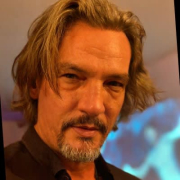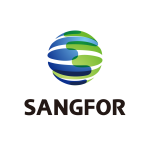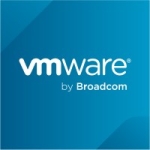What is our primary use case?
My company is a consultancy service and we design, deploy, and support Apache CloudStack for companies worldwide. CloudStack is generally used as a cloud management solution for public clouds, where it is used as a type of bridge for telecom companies and cloud service providers. This is the most common use case around the world, but we also see a lot of use cases for universities as well private cloud environments that are situated on-premises.
Our typical process when using CloudStack starts with designing the cloud, which includes the infrastructure and everything that the customer needs to provide such as the servers, networking, and storage. Once the design is completed, our team then deploys and installs CloudStack, after which we handle the support and training of the customer's employees.
CloudStack is suitable for companies of all sizes, ranging across small, medium, and large. Some companies use it globally, whereas others may use it with a local cloud provider.
How has it helped my organization?
Compared to other open source technology, CloudStack is very easy to deploy and use day-to-day. Because it's so simple, it's oftentimes cheaper to maintain than its competitors. Not only that, but it's also fast and extremely stable.
For example, if you wanted to use OpenStack, you would likely need to get one of the big companies like Red Hat or Canonical to help you implement it, whereas with CloudStack, the packages are provided direct from the community.
What is most valuable?
I have been impressed by CloudStack's most recent updates around Kubernetes. In particular, they have worked with Kubernetes to support the Cluster API, and you can now easily integrate Kubernetes into CloudStack and get access to a lot of good features. For example, CloudStack can support different hypervisors in the same infrastructure at the same time, such as when using KVM and VMware engine server simultaneously through your workload in the cloud.
We are currently working around the critical points in CloudStack in order to simplify the process, and before the newest versions, CloudStack needed to reload each Virtual Router for each tenant on top of CloudStack. Now, however, they have improved this process by ensuring zero downtime when building the Virtual Router. For a critical environment, this is a nice feature because you don't have to experience any downtime as before.
What needs improvement?
We recognize that CloudStack is an easy-to-use cloud management platform and, in my opinion, there have been a lot of improvements in the past few years, particular when it comes to the modern UI and overall ease of management. However, I believe that CloudStack needs to grow their marketing in the commercial side. They don't have a great piece of market share right now.
For now, we have two versions per year, one being the LTS (Long Term Support) version, and the other is just for development. It's a very good platform for us at the moment, but one feature I would like to see is CloudStack for edge zones. This would enable us to use it for cloud edge computing, as well as enable search providers to use it to provide cloud service in edge zones, for example.
For how long have I used the solution?
I have been working with CloudStack for about nine years now.
What do I think about the stability of the solution?
CloudStack is a production-rated product and it is very stable. As for maintenance, the LTS version from the community requires periodic updates that sometimes require a company with expertise to help in order to reduce your risks.
There is also support from the community, although you are not always guaranteed a timely response. That's mainly where my company steps in to help, as we are able to help customers update, improve, and expand their cloud infrastructure as necessary.
What do I think about the scalability of the solution?
Scaling CloudStack is really easy. You just need to add more servers to your CloudStack deployment and it will be available to the customer. There are also mechanisms for using Kubernetes with CloudStack, and other features to help the customer scale easier.
On the whole, you can see everything from small, medium, to large business using CloudStack, sometimes globally but also with local cloud providers.
How are customer service and support?
It's very easy to get support for CloudStack because there's a large community available to give you help. Not just that, but my company is also dedicated to supporting users from the community as well. Of course, when you are a customer of ours, you also get access to a strict SLA for support.
How would you rate customer service and support?
Which solution did I use previously and why did I switch?
At my previous company I used OpenStack, which was around the year 2010. Both these solutions cover the same proposal for cloud computing in that they create virtual machines, segregate them, and provide storage as a service, and so on. The main difference lies in the complexity. For example, using OpenStack, you need a lot of technical staff specialized in OpenStack specifically in order to manage it. With CloudStack, on the other hand, you can simply use your on-site staff who are already working on the infrastructure.
How was the initial setup?
The setup for CloudStack is a really easy process, compared with other solutions. For example, in only one day you can have an operational cloud running in your infrastructure. This is where you see a big difference when you compare CloudStack with OpenStack. With OpenStack, you have a lot of models to contend with, making it complex to deploy and configure, whereas with CloudStack it's easy because you only require one package that provides everything you need.
What about the implementation team?
When a client of ours wants to deploy something with CloudStack, depending on the size of the project, we usually involve a professional from our architecture team to gather the requirements and design the new cloud infrastructure.
One interesting case is the University of São Paulo in Brazil. They have a large cloud managed by CloudStack comprising about 500 bare-metal servers using VMware and XenServer. To manage and maintain all this infrastructure in their two data centers, they use 5 infrastructure team members, these are just infrastructure specialists.
What's my experience with pricing, setup cost, and licensing?
CloudStack is an open source solution, so you don't need to pay anything for it. When our company develops something specially for CloudStack, it is donated to the Apache Software Foundation and provided to anyone that wants to use it.
What other advice do I have?
I can recommend CloudStack because there are a lot of large companies using it in production for critical mission systems, and everything else. It's a very stable product, and compared to similar solutions it is also easier to deploy.
Then there's the fact that you don't need a license, so it's obviously cheaper than most alternatives. If you seek out a company such as a consultant service to help you build the infrastructure, service cloud, orchestrator, etc., then you will find that CloudStack doesn't take much time to implement. The other solutions are a different story, and they may take up to three or four times longer to deploy. CloudStack is very intentional about keeping things simple.
One final point is that with CloudStack, you don't have the vendor lock-in that you might have with OpenStack. If you're using CloudStack and you obtain support from one company and then decide to go with another company for support, it's all the same base code. Contrast this with OpenStack, where if you have Canonical OpenStack running in your infrastructure, you will have vendor lock-in because it's not that easy to move over to Red Hat OpenStack.
I would rate Apache CloudStack a ten out of ten.
Disclosure: My company has a business relationship with this vendor other than being a customer. Integrator


















